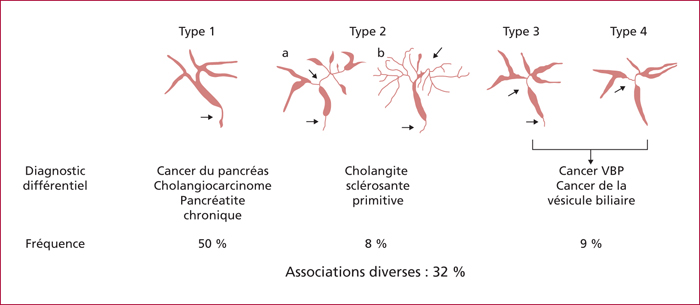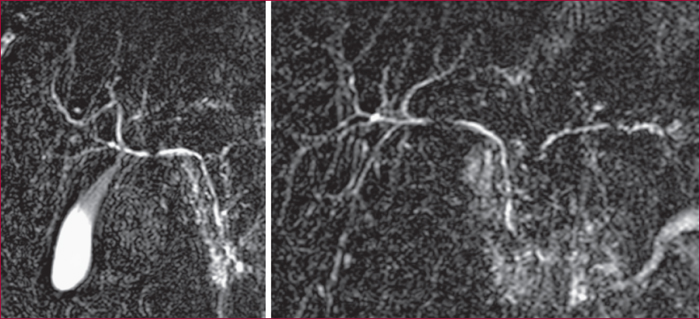Hépato-Gastro & Oncologie Digestive
MENUIgG4-related sclerosing cholangitis: the biliary lesion of IgG4-related disease Volume 22, issue 10, Décembre 2015
Unité d’Hépatogastroentérologie,
64046 Pau Cedex, France
- Key words: IgG4, IgG4-related disease, sclerosing cholangitis
- DOI : 10.1684/hpg.2015.1228
- Page(s) : 896-904
- Published in: 2015
IgG4-related cholangitis is a peculiar fibro-inflammatory biliary-tract disease of unknown cause, characterized by an increase in serum IgG4, an IgG4-plasmocytic infiltration and a dense fibrosis of the biliary wall. IgG4 cholangitis is frequently associated with type 1 autoimmune pancreatitis, and less often with other manifestations of IgG4-related disease (mainly sialadenitis, retroperitoneal fibrosis and kidney involvement). IgG4 cholangitis is more common in men of middle or advanced age and is mainly revealed by jaundice. Differential diagnosis includes pancreatic cancer, cholangiocarcinoma, primary or secondary sclerosing cholangitis. Biliary lesions, localized, multifocal or diffuse can be easily visualized by imaging, especially MRI. The main diagnostic criteria are imaging characteristics, extra-biliary involvement, serum IgG4 increase, histology, and corticosteroid sensitivity. The disease is usually sensitive to corticosteroid, but often relapses, and cirrhosis and terminal liver failure may occur. Immunosuppressive treatment (azathioprine, mycophenolate, and especially rituximab) could be useful when relapses or steroid-dependance occur. Long-term prognosis is poorly known.



